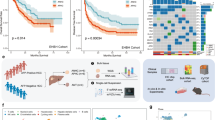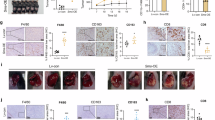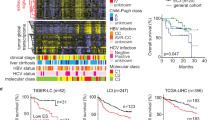Abstract
Antitumor vaccination therapies using attenuated Salmonella typhimurium carrying plasmid DNA encoding tumor-associated antigens are currently under preclinical development. In the present study, we first established a useful method to facilitate in vivo monitoring of attenuated S. typhimurium uptake using a bioluminescent lux gene operon plasmid. Following transformation with the lux gene operon construct, mice were fed with various amounts of attenuated S. typhimurium-lux to monitor in vivo clearance over a period of 24 h. We found that the ingested attenuated S. typhimurium-lux cells were almost cleared out 9 h postfeeding, as judged by a significant decrease in bioluminescence. We further examined the therapeutic efficacy of vaccination using attenuated S. typhimurium carrying the mouse α-fetoprotein (AFP) gene against a cancer line CT26-murine α-feto protein (mAFP) that stably expresses AFP and mouse hepatocellular carcinoma (HCC) Hepa1-6. Attenuated S. typhimurium oral DNA vaccine was found to promote protective immunity against both CT26-mAFP and Hepa1-6 tumor cells growth. The oral DNA vaccine significantly increased the life span of tumor-challenged mice in both tumor models. Together, these results suggest that vaccination with the attenuated S. typhimurium oral DNA vaccine that carries the AFP gene could be a promising strategy to prevent HCC development.
This is a preview of subscription content, access via your institution
Access options
Subscribe to this journal
Receive 12 print issues and online access
$259.00 per year
only $21.58 per issue
Buy this article
- Purchase on SpringerLink
- Instant access to full article PDF
Prices may be subject to local taxes which are calculated during checkout




Similar content being viewed by others
References
Schafer DF, Sorrell MF . Hepatocellular carcinoma. Lancet 1999; 353: 1253–1257.
Hoofnagle JH . Hepatocellular carcinoma: summary and recommendations. Gastroenterology 2004; 127: S319–S323.
Butterfield LH . Immunotherapeutic strategies for hepatocellular carcinoma. Gastroenterology 2004; 127: S232–S241.
Deutsch HF . Chemistry and biology of alpha-fetoprotein. Adv Cancer Res 1991; 56: 253–312.
Hanke P, Serwe M, Dombrowski F, Sauerbruch T, Caselmann WH . DNA vaccination with AFP-encoding plasmid DNA prevents growth of subcutaneous AFP-expressing tumors and does not interfere with liver regeneration in mice. Cancer Gene Ther 2002; 9: 346–355.
Butterfield LH, Koh A, Meng W, Vollmer CM, Ribas A, Dissette V et al. Generation of human T-cell responses to an HLA-A2.1-restricted peptide epitope derived from alpha-fetoprotein. Cancer Res 1999; 59: 3134–3142.
Butterfield LH, Meng WS, Koh A, Vollmer CM, Ribas A, Dissette VB et al. T cell responses to HLA-A*0201-restricted peptides derived from human alpha fetoprotein. J Immunol 2001; 166: 5300–5308.
Butterfield LH, Ribas A, Meng WS, Dissette VB, Amarnani S, Vu HT et al. T-cell responses to HLA-A*0201 immunodominant peptides derived from alpha-fetoprotein in patients with hepatocellular cancer. Clin Cancer Res 2003; 9: 5902–5908.
Vollmer Jr CM, Eilber FC, Butterfield LH, Ribas A, Dissette VB, Koh A et al. Alpha-fetoprotein-specific genetic immunotherapy for hepatocellular carcinoma. Cancer Res 1999; 59: 3064–3067.
Meng WS, Butterfield LH, Ribas A, Dissette VB, Heller JB, Miranda GA et al. Alpha-fetoprotein-specific tumor immunity induced by plasmid prime-adenovirus boost genetic vaccination. Cancer Res 2001; 61: 8782–8786.
Stocker BA . Aromatic-dependent salmonella as anti-bacterial vaccines and as presenters of heterologous antigens or of DNA encoding them. J Biotechnol 2000; 83: 45–50.
Reisfeld RA, Niethammer AG, Luo Y, Xiang R . DNA vaccines suppress tumor growth and metastases by the induction of anti-angiogenesis. Immunol Rev 2004; 199: 181–190.
Darji A, Guzman CA, Gerstel B, Wachholz P, Timmis KN, Wehland J et al. Oral somatic transgene vaccination using attenuated S. typhimurium. Cell 1997; 91: 765–775.
Luo Y, Zhou H, Mizutani M, Mizutani N, Reisfeld RA, Xiang R . Transcription factor Fos-related antigen 1 is an effective target for a breast cancer vaccine. Proc Natl Acad Sci USA 2003; 100: 8850–8855.
Yu YA, Shabahang S, Timiryasova TM, Zhang Q, Beltz R, Gentschev I et al. Visualization of tumors and metastases in live animals with bacteria and vaccinia virus encoding light-emitting proteins. Nat Biotechnol 2004; 22: 313–320.
Mahajan SD, Aalinkeel R, Schwartz SA, Chawda RP, Nair MPN . Effector cell mediated cytotoxicity measured by intracellular Granzyme B release in HIV infected subjects. Biol Proc Online 2003; 5: 182–188.
Niethammer AG, Xiang R, Becker JC, Wodrich H, Pertl U, Karsten G et al. A DNA vaccine against VEGF receptor 2 prevents effective angiogenesis and inhibits tumor growth. Nat Med 2002; 8: 1369–1375.
Francis KP, Joh D, Bellinger-Kawahara C, Hawkinson MJ, Purchio TF, Contag PR . Monitoring bioluminescent Staphylococcus aureus infections in living mice using a novel luxABCDE construct. Infect Immun 2000; 68: 3594–3600.
Zhao M, Yang M, Li XM, Jiang P, Baranov E, Li S et al. Tumor-targeting bacterial therapy with amino acid auxotrophs of GFP-expressing Salmonella typhimurium. Proc Natl Acad Sci USA 2005; 102: 755–760.
Wang XP, Liu GZ, Song AL, Li HY, Liu Y . Antitumor immunity induced by DNA vaccine encoding alpha-fetoprotein/heat shock protein 70. World J Gastroenterol 2004; 10: 3197–3200.
Tian G, Yi JL, Xiong P . Antitumor immunopreventive effect in mice induced by DNA vaccine encoding a fusion protein of alpha-fetoprotein and CTLA4. World J Gastroenterol 2004; 10: 200–204.
Saeki A, Nakao K, Nagayama Y, Yanagi K, Matsumoto K, Hayashi T et al. Diverse efficacy of vaccination therapy using the alpha-fetoprotein gene against mouse hepatocellular carcinoma. Int J Mol Med 2004; 13: 111–116.
Xiang R, Lode HN, Chao TH, Ruehlmann JM, Dolman CS, Rodriguez F et al. An autologous oral DNA vaccine protects against murine melanoma. Proc Natl Acad Sci USA 2000; 97: 5492–5497.
Xiang R, Mizutani N, Luo Y, Chiodoni C, Zhou H, Mizutani M et al. A DNA vaccine targeting survivin combines apoptosis with suppression of angiogenesis in lung tumor eradication. Cancer Res 2005; 65: 553–561.
Weth R, Christ O, Stevanovic S, Zoller M . Gene delivery by attenuated Salmonella typhimurium: comparing the efficacy of helper versus cytotoxic T cell priming in tumor vaccination. Cancer Gene Ther 2001; 8: 599–611.
Grimm CF, Ortmann D, Mohr L, Michalak S, Krohne TU, Meckel S et al. Mouse alpha-fetoprotein-specific DNA-based immunotherapy of hepatocellular carcinoma leads to tumor regression in mice. Gastroenterology 2000; 119: 1104–1112.
Voisey CR, Marincs F . Elimination of internal restriction enzyme sites from a bacterial luminescence (luxCDABE) operon. Biotechniques 1998; 24: 56–58.
Acknowledgements
We thank Dr Hui-Wen Lo at Department of Molecular and Cellular Oncology and Sandra Young at Department of Scientific Publication at the University of Texas MD Anderson Cancer Center for editing the manuscript. This work was supported by Grants from SPORE in Ovarian Cancer P50CA83639, SPORE in Pancreatic Cancer P20CA101936 and Kadoorie Charitable Foundation (to M-C Hung). J-YH was partially supported by the Kaohsiung Medical University Hospital, Taiwan.
Author information
Authors and Affiliations
Corresponding author
Rights and permissions
About this article
Cite this article
Chou, CK., Hung, JY., Liu, JC. et al. An attenuated Salmonella oral DNA vaccine prevents the growth of hepatocellular carcinoma and colon cancer that express α-fetoprotein. Cancer Gene Ther 13, 746–752 (2006). https://doi.org/10.1038/sj.cgt.7700927
Received:
Revised:
Accepted:
Published:
Issue date:
DOI: https://doi.org/10.1038/sj.cgt.7700927
Keywords
This article is cited by
-
Attenuated Salmonella carrying siRNA-PD-L1 and radiation combinatorial therapy induces tumor regression on HCC through T cell-mediated immuno-enhancement
Cell Death Discovery (2023)
-
Tumour-targeting bacteria engineered to fight cancer
Nature Reviews Cancer (2018)
-
Engineering the perfect (bacterial) cancer therapy
Nature Reviews Cancer (2010)



